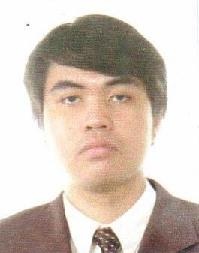At the dawn of the 20th century, the Treaty of Paris became the catalyst that solidified America’s control over the Philippine Islands. Motivated by the White Man’s Burden, United States’ rule over the Philippines later brought profound changes that altered this country’s history forever.
Some of those reforms, among other things, was the introduction of democratic ideals considered novel to the people of this former Spanish colony. Indeed, the Separation of Church and State, non-secularized public education, and Freedom of Religion eventually became the hallmarks of American sovereignty over their new Filipino colonial subjects.
Reception, however, towards United States’ “Benevolent Assimilation” over the Philippines has been varied to say the least. The natives, though arms and ammunition already destroyed following their defeat in the brutal Philippine-American War, still had their flames of nationalism directed against their new colonial masters. This then prompted the US government to employ various tactics to “justify” their rule over the Islands. Eventually, the photographs of Dean Worcester became the product of these strategies as his images seemingly portrayed Filipino religious groups as “savages” and “barbaric” requiring American intervention as a means to “civilize” them.
With said photographs further reinforced by other US colonial justification tactics through the years (McCoy, 2009), the Filipinos have, unfortunately, succumbed to these methods, brainwashed and accepted America’s rule, to eventually become the most Westernized people in all of Asia (Curaming, 2021).
Meanwhile, news of the American take over of the Philippines has always been a welcome development for many groups under the Protestant denominations. For them, the religious freedom now imposed by the US government would finally allow them to spread the Word of God in a country that has been terribly misguided by the 300-year decadence and corruption of the Roman Catholic Church during Spanish times. Hence, according to Laubach (1925), American missionaries belonging to the Methodist Church, the Episcopal Church, the Congregational Church, the Christian and Missionary Alliance, among others have all entered the Philippines in the 1900s for their evangelical missions in the cities, rural lowlands, and some even in the far-flung mountains of the country.
If the Filipinos later succumbed, and the Protestants have always been welcoming, of United States’ rule over the Philippines, the same, however, cannot be said for the Roman Catholic Church who viewed America’s latest reforms as a threat to its three centuries-worth of presence in the country.
Therefore, while guided by the Pro Tutela Fidei doctrine, the Archbishops of Manila, Cebu, Iloilo, and Davao have then summoned the Catholic religious orders of Europe to counter the imminent spread of Protestantism in the Islands. Eventually, the work of Bugnot, et al. (1998) revealed that Irish Redemptorist priests from the Congregatio Sanctissimi Redemptoris (CSsR), Dutch clergymen belonging to the Missionarii Sacratissimi Cordis (MSC), Belgian Scheut Fathers part of the Congregatio Immaculati Cordis Mariae (CICM), German Steyler missionaries affiliated with the Societas Verbi Divini (SVD), among others have answered the call and likewise arrived in the Philippines to be deployed (and later compete) in those areas were the Protestant evangelical missions were concentrated.
Overall, above premises considered, this research aims to comparatively analyze (using Ariela Azoulay’s (2012) ontology of photography method) the Catholic and Protestant missionary photographs of Filipino indigenous groups during the first 30 years of United States colonization of the Philippines. In doing so, it likewise attempts to determine how these ecclesiastical images differ from those taken by Dean Worcester during the same period.


